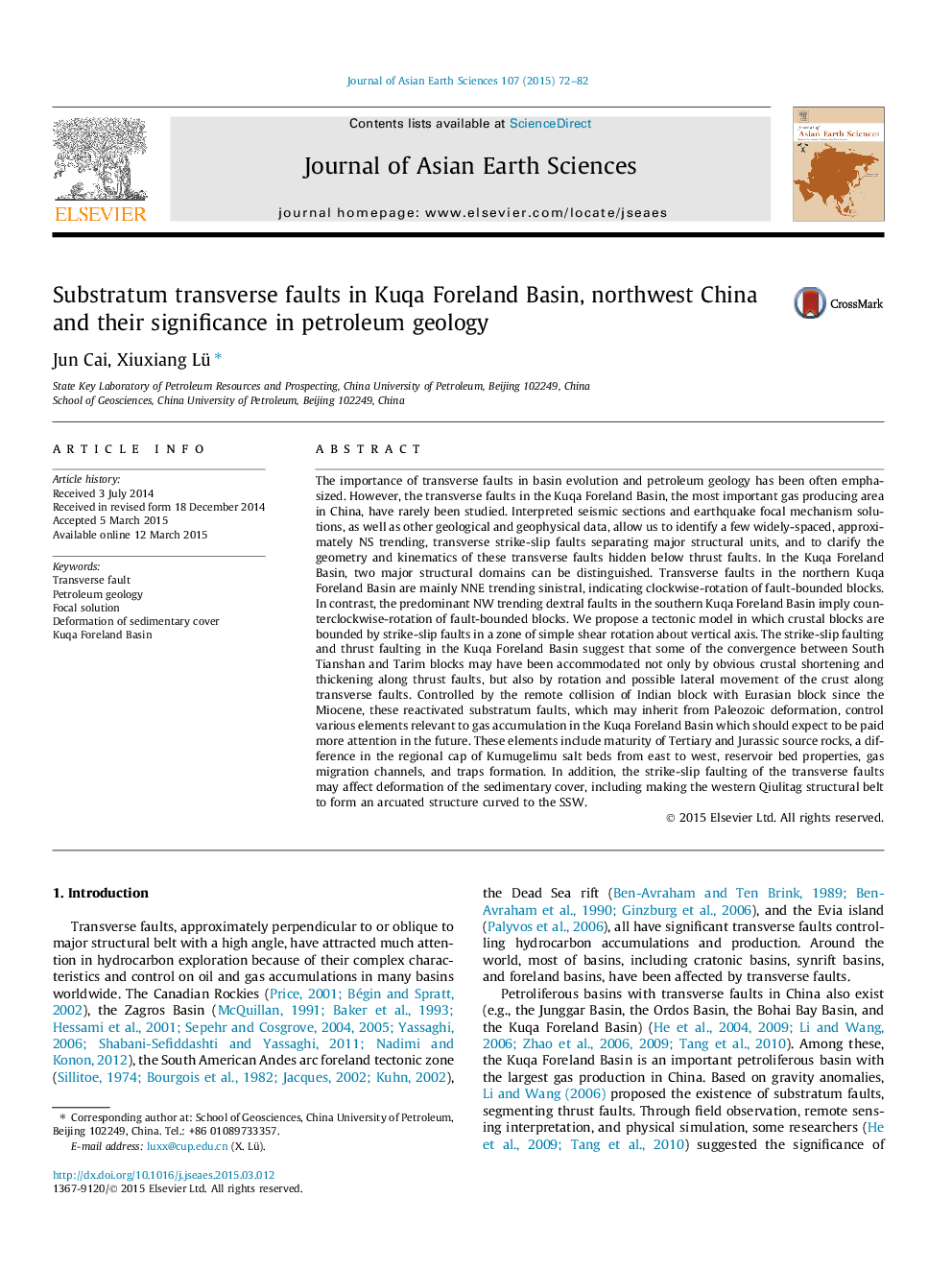| کد مقاله | کد نشریه | سال انتشار | مقاله انگلیسی | نسخه تمام متن |
|---|---|---|---|---|
| 4730379 | 1640362 | 2015 | 11 صفحه PDF | دانلود رایگان |

• A series of substratum transverse faults were identified in Kuqa Foreland Basin.
• Focal solutions were used to analyze the activity nature of the substratum transverse faults in Kuqa Foreland Basin firstly.
• A tectonic model to explain the kinematics of transverse faults is proposed.
• The research on relationship between transverse faults and hydrocarbon distribution in Kuqa Foreland Basin is discussed.
The importance of transverse faults in basin evolution and petroleum geology has been often emphasized. However, the transverse faults in the Kuqa Foreland Basin, the most important gas producing area in China, have rarely been studied. Interpreted seismic sections and earthquake focal mechanism solutions, as well as other geological and geophysical data, allow us to identify a few widely-spaced, approximately NS trending, transverse strike-slip faults separating major structural units, and to clarify the geometry and kinematics of these transverse faults hidden below thrust faults. In the Kuqa Foreland Basin, two major structural domains can be distinguished. Transverse faults in the northern Kuqa Foreland Basin are mainly NNE trending sinistral, indicating clockwise-rotation of fault-bounded blocks. In contrast, the predominant NW trending dextral faults in the southern Kuqa Foreland Basin imply counterclockwise-rotation of fault-bounded blocks. We propose a tectonic model in which crustal blocks are bounded by strike-slip faults in a zone of simple shear rotation about vertical axis. The strike-slip faulting and thrust faulting in the Kuqa Foreland Basin suggest that some of the convergence between South Tianshan and Tarim blocks may have been accommodated not only by obvious crustal shortening and thickening along thrust faults, but also by rotation and possible lateral movement of the crust along transverse faults. Controlled by the remote collision of Indian block with Eurasian block since the Miocene, these reactivated substratum faults, which may inherit from Paleozoic deformation, control various elements relevant to gas accumulation in the Kuqa Foreland Basin which should expect to be paid more attention in the future. These elements include maturity of Tertiary and Jurassic source rocks, a difference in the regional cap of Kumugelimu salt beds from east to west, reservoir bed properties, gas migration channels, and traps formation. In addition, the strike-slip faulting of the transverse faults may affect deformation of the sedimentary cover, including making the western Qiulitag structural belt to form an arcuated structure curved to the SSW.
Journal: Journal of Asian Earth Sciences - Volume 107, 1 August 2015, Pages 72–82